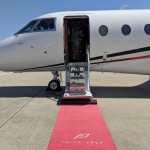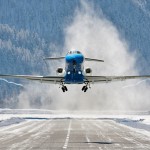What are the key factors in aviation safety?
A report, issued yesterday, from the AAIB (Air Traffic Investigations Branch) revealed the near-miss between a Turkish Airlines Boeing 777 and a Citation 525 private jet over London in July last year. This has inevitably raised questions about aviation safety, both for commercial airlines and private aviation. Much discussion has centred around the systems that aircraft use to detect other aircraft and monitor the traffic situation around them, and the actions of the crew in both aircraft.
TCAS is a traffic collision avoidance system designed to reduce the incidence of mid-air collisions between aircraft. TCAS systems are mandated by the International Civil Aviation Authority, and have to be fitted to commercial aircraft with a maximum take-off weight of over 5700kg or that are authorised to carry more than 19 passengers. The collision avoidance systems have been upgraded and updated following previous incidents, and the second generation TCAS II not only alerts the aircraft to a potential threat, but also informs the pilot with vocalised instructions for collision avoidance. In this incident the Turkish Airlines Boeing 777 airliner was fitted with TCAS II and the Citation 525 was fitted with TCAS I.
At the moment these systems work vertically, giving instructions such as “descend, descend” or “climb, climb” but there is a TCAS III in development which also acts to further increase the separation between aircraft by directing horizontal actions such as “turn right, descend”. At the moment there are no implementation plans for TCAS III.
Ultimately, aviation safety – whether in a scheduled airliner or a private jet – is about a combination of modern, well maintained aircraft, and the experience and training of the pilot. Private jets are as safe, if not more so than travelling by scheduled airlines. For passengers looking to charter aircraft commercially, safety is a paramount concern. PrivateFly is a global network of aircraft operators, and customers are assured of flight safety as we only work with accredited operators and have an on-going due diligence process.
Today private jet travel is a popular form of travel for many, whether for business or leisure trips. Latest European air traffic control data showed a +6.35 percent growth in private aviation for July 2010. To ensure ongoing customer confidence in the sector, it is imperative that all private jet operators are licensed vetted and approved for charter. As the only online booking aggregator of private charter in Europe, PrivateFly.com ensures that all operators meet and exceed these standards.
Related content

10 rules of private jet-iquette

Three special ‘Leap Day’ trips by private jet



